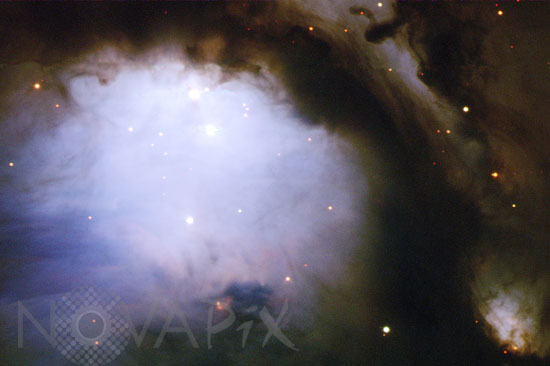Photo Agency - Astronomy - Space - Nature

Part of M78, NGC 2068 in Orion
author: Anglo-Australian Observatory/David Malin Images/Novapix
reference: a-neb20-68005
Image Size 300 DPI: 26 * 17 cm
In a modest telescope M78 looks like a faint comet, the same telescope will also reveal two stars of similar apparent brightness (about 10th magnitude) embedded in the nebula. It is light from these stars reflected by dust grains that is responsible for the nebulosity, and a look at our color picture shows that the whole field is shrouded in dust. M78 is thus a reflection nebula, one of the brightest in the sky. But the conjunction of the two obvious stars and dust is not an accident. They are the brightest members of a small cluster of stars forming inside the dusty cloud. These are mostly invisible at optical wavelengths but some signs of them are evident in the two small, reddish nebulae towards the lower center and extreme lower left (SW) of the frame. These are Herbig-Haro objects, rapidly-moving jets ejected at an early stage in the formation of stars. Where such jets emerge from the dense dust they advertise recent star formation.
Keywords for this photo:
AAO - ASTRONOMY - M78 - NEBULA - NGC 2068 - ORION - REFLECTION NEBULA - SIDING SPRING - STAR - STAR FORMATION -
Contact : Stéphane Aubin +33-(0)9-51-26-53-76
© Novapix - All rights reserved


